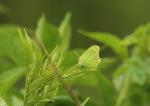Conservationists are telling us that since the Second World War British Butterflies have been in decline. The loss of their habitat can be put down to several reasons, but changes in agricultural management, reutilisation of land and pollution must be some of the main causes for the decline. Other factors to add to this decline in numbers could also include Climate Change, the change in the seasons, higher temperatures, heavy rainfall and flooding and extremes in temperature. Obviously all these changes not only affect Butterflies but many other creatures as well, including humans!.
The Summer of 2013 appears to have seen a slight upturn in these numbers. During my travels around the County and Country this summer, I have seen a significant increase in their numbers which has often been a topical talking point of interest, lets hope it continues.
Brimstone
These bright yellow butterflies are often the first to be seen in the Spring. The male Brimstone butterflies have sulphur yellow forewings and hindquarters with an orange central spot. The females fore and hindwings are a delicate yellow or pale green with an orange central spot. Both sexes have greenish veined underwings. Their caterpillars are bluish green with a pale line down each side. The pupa looks like a curled leaf.
Brimstones are widespread throughout Europe and North Africa and can be found in woodlands as well as gardens. The caterpillars feed on buckthorn and alder buckthorn. The adults can be seen in meadows, sipping nectar from teasels, knapweed and buddleia.
|






